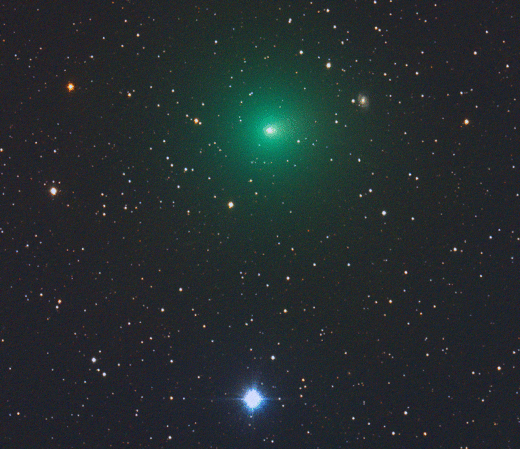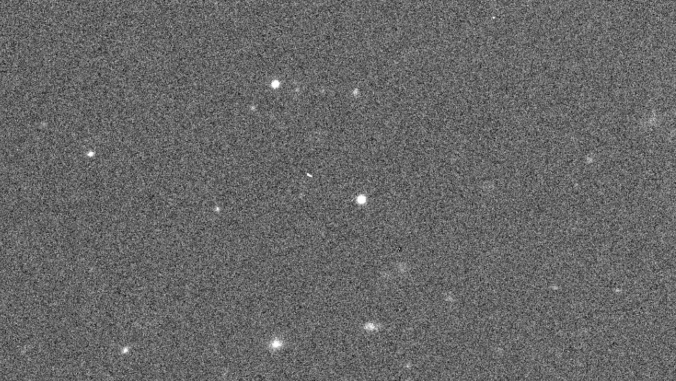In what is perhaps yet another signal of end times upon us, an asteroid that is the "size of London's Big Ben clock tower" is going to fly past the Earth tonight, moments after the end of the next Presidential debate.
It'll pass the Earth safely on Thursday at 10:49PM EST, Fox News reports.
The asteroid is called 2020 TGI and is traveling at an estimated 30,700 miles per hour. It's going to miss the Earth by about 7 million miles.
It had recently come close to the Earth on April 20, 2013 and won't make its way back around again until Feburary 6, 2024. It is estimated that the asteroid is between 154 and 360 feet wide. "Potentially hazardous" near Earth objects are defined as those who come within 0.05 astronomical and measure over 460 feet in diameter.
There's currently more than 18,000 of these near Earth objects.
One asteroid "the size of a pickup truck" passed the Earth by just 2,000 miles in August. It was the closest call ever recorded and NASA didn't notice the object until after it had passed the Earth. In 2018, the agency put together a plan for the Earth to better prepare itself against near Earth objects.
NASA Administrator Jim Bridenstine said in 2019 that an asteroid strike was the possibly the planet's biggest threat. The topic of asteroids and other existential threats, including volcanos, pandemics and earthquakes, was also discussed last week on a podcast with University of South Florida professor Dr. Marc J. Defant.
But with the way the year has been going, we're sure there's plenty of people out there with their fingers crossed that the asteroid will change paths and finally put an end to it all...
2020 TGI
Oct 21, 2020

 tass.com
tass.com
The Orion meteor shower peaks today. This is a meteor captured by a wide-angle camera from Fuji to the northern sky from the night of October 20th to the early morning of October 21st, 2020. The meteors that flowed overnight are flowing all at once. The most flowing is from dawn to dawn. Please search the sky evenly.#オリオン座流星群
It'll pass the Earth safely on Thursday at 10:49PM EST, Fox News reports.
The asteroid is called 2020 TGI and is traveling at an estimated 30,700 miles per hour. It's going to miss the Earth by about 7 million miles.
It had recently come close to the Earth on April 20, 2013 and won't make its way back around again until Feburary 6, 2024. It is estimated that the asteroid is between 154 and 360 feet wide. "Potentially hazardous" near Earth objects are defined as those who come within 0.05 astronomical and measure over 460 feet in diameter.
There's currently more than 18,000 of these near Earth objects.
One asteroid "the size of a pickup truck" passed the Earth by just 2,000 miles in August. It was the closest call ever recorded and NASA didn't notice the object until after it had passed the Earth. In 2018, the agency put together a plan for the Earth to better prepare itself against near Earth objects.
NASA Administrator Jim Bridenstine said in 2019 that an asteroid strike was the possibly the planet's biggest threat. The topic of asteroids and other existential threats, including volcanos, pandemics and earthquakes, was also discussed last week on a podcast with University of South Florida professor Dr. Marc J. Defant.
But with the way the year has been going, we're sure there's plenty of people out there with their fingers crossed that the asteroid will change paths and finally put an end to it all...
2020 TGI
AMS event #5976-2020
Location Santa Maria US Geo Loc 34.9743° / -120.4213° Elevation 68.9836m

Press review: NATO on guard over space threats and the ruble’s direction after US election
Top stories in the Russian press on Thursday, October 22
NATO Secretary-General Jens Stoltenberg said on Wednesday that competition in space is rising every year and claimed that Russia and China are developing anti-satellite systems, which could "blind, disable or shoot down satellites and create dangerous debris in orbit." According to Dmitry Stefanovich, research fellow at the Center for International Security at the Institute of World Economy and International Relations, the focus on "space threats coming from Russia and China" was expected. “This has become the universal rationale for any activity in the field of military development of NATO countries,” he told the newspaper. The commentator believes that at the first stage a more advanced system for space monitoring will be created, "which is not bad for mankind." "Moreover, in the event of some normalization of NATO-Russia relations, a kind of a "single window" for cooperation could emerge, for example, with our system for space control." Earlier, Russia put forward initiatives on creating a single catalogue of space objects, he recalled.
On the other hand, according to German media reports, the new center could further coordinate "space defense." "This is just a step away from a ‘space attack'," the expert warned. So far, space has not become a battleground, but space infrastructure is a key element of ensuring combat actions on the planet’s surface.
Russia and China have accused the US and NATO of seeking to turn outer space into a new battleground. At the UN, Moscow and Beijing are promoting the idea of signing a legally binding agreement on banning space militarization. However, the countries fail to agree on universal rules of behavior in this field.
The Orion meteor shower peaks today. This is a meteor captured by a wide-angle camera from Fuji to the northern sky from the night of October 20th to the early morning of October 21st, 2020. The meteors that flowed overnight are flowing all at once. The most flowing is from dawn to dawn. Please search the sky evenly.#オリオン座流星群








